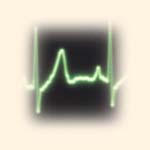Study Offers Clues to Link Between Arrhythmia, Sudden Death
Uncovering molecular underpinnings could lead to new, genetically targeted therapies.
|
E-mail this article
Subscribe to news
Printer friendly version
|

(SOURCE: Lifespan, news release, May 8, 2008)
THURSDAY, May 8 (HealthDay News) -- New information about the molecular mechanisms that cause cardiac arrhythmia (irregular heartbeat) and how it triggers sudden cardiac death has been uncovered by Rhode Island Hospital researchers.
They said their findings could lead to the development of new, genetically targeted therapies to treat and prevent fatal arrhythmias. The study was published online Thursday in The Journal of Clinical Investigation.
"We are still struggling to understand why arrhythmia causes sudden cardiac death in some patients, but not others, and what underlying molecular mechanisms or abnormalities may be at play," study senior author Dr. Gideon Koren, director of the cardiovascular research center at Rhode Island Hospital and a professor of medicine at Brown University's medical school, said in a prepared statement.
He and his team developed animal models of long QT syndrome (LQTS) -- a disorder of the heart's electrical system that causes fast, chaotic heartbeats -- to study the various mechanisms that cause arrhythmia. The animal models included the two most common genetic forms of LQTS in humans -- LQT1 and LQT2.
In both forms, faulty genes lead to production of abnormal ion channels, the proteins responsible for moving potassium in and out of heart cells so they can contract. In LQT1, the mutation is in the KvLQT1 gene, while in LQT2, the mutation is in the HERG gene.
The animals with LQT2 exhibited spontaneous arrhythmias, and some of them died suddenly, while there was no spontaneous arrhythmia or sudden death among the animals with LQT1.
The researchers believe that the electrical cause for the deadly arrhythmias in the LQT2 group is increased spatial dispersion of repolarization across the front of the outside layers of cardiac muscle. The LQT1 group did not have increased dispersion.
Koren and his team also believe that HERG and KvLQT1 may interact, and that a mutation of either one of these genes could affect the other.
"While results from animal models are not always applicable to humans, we believe our findings are a first step toward gaining a better understanding of how and why arrhythmias cause sudden cardiac death. However, there is much more that we still don't know," Koren said.
More information
The American Academy of Family Physicians has more about arrhythmia. 
Copyright © 2008 ScoutNews, LLC. All rights reserved. 
HealthDayNews articles are derived from various sources and do not reflect federal policy. healthfinder.gov does not endorse opinions, products, or services that may appear in news stories. For more information on health topics in the news, visit the healthfinder.gov health library.